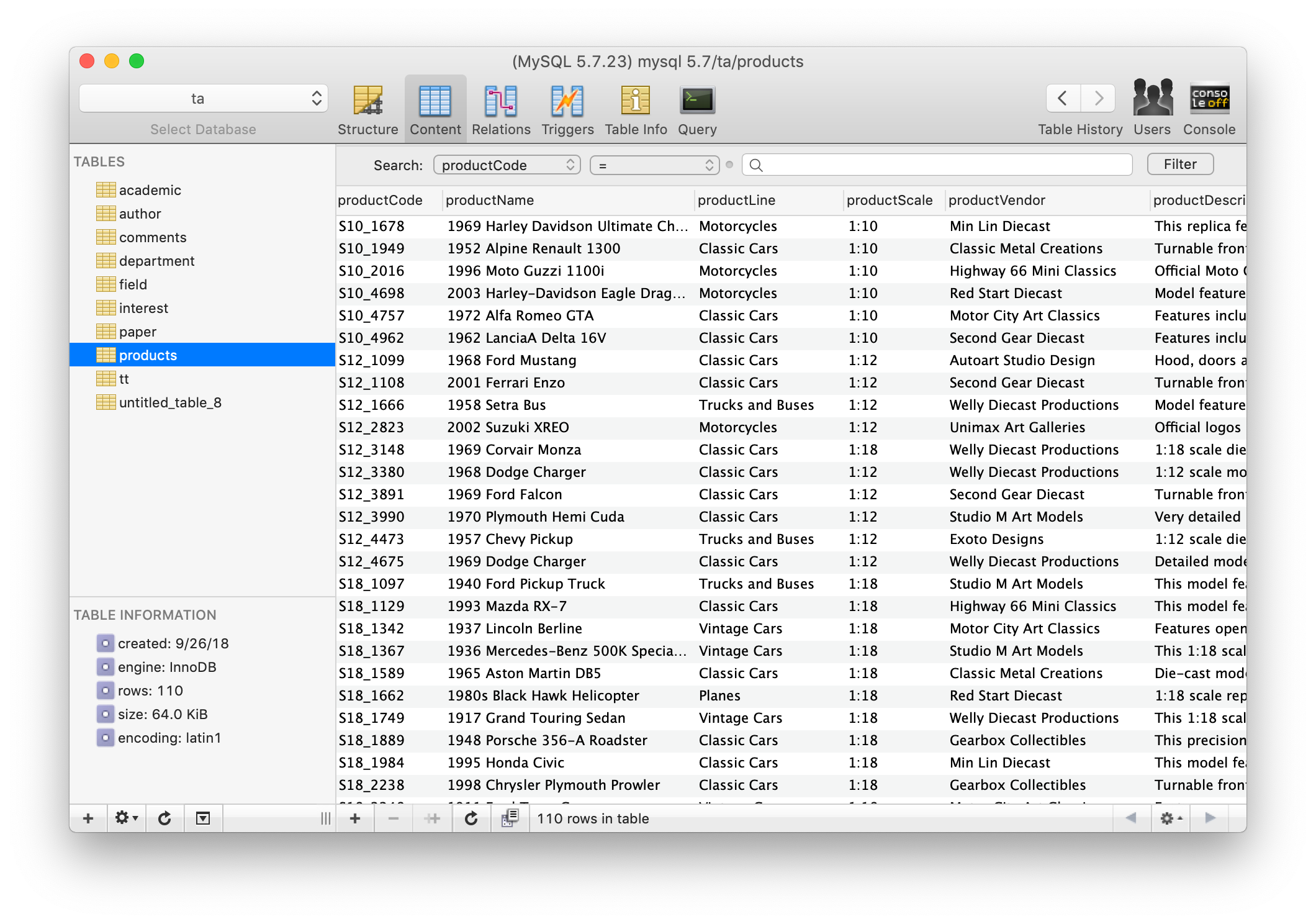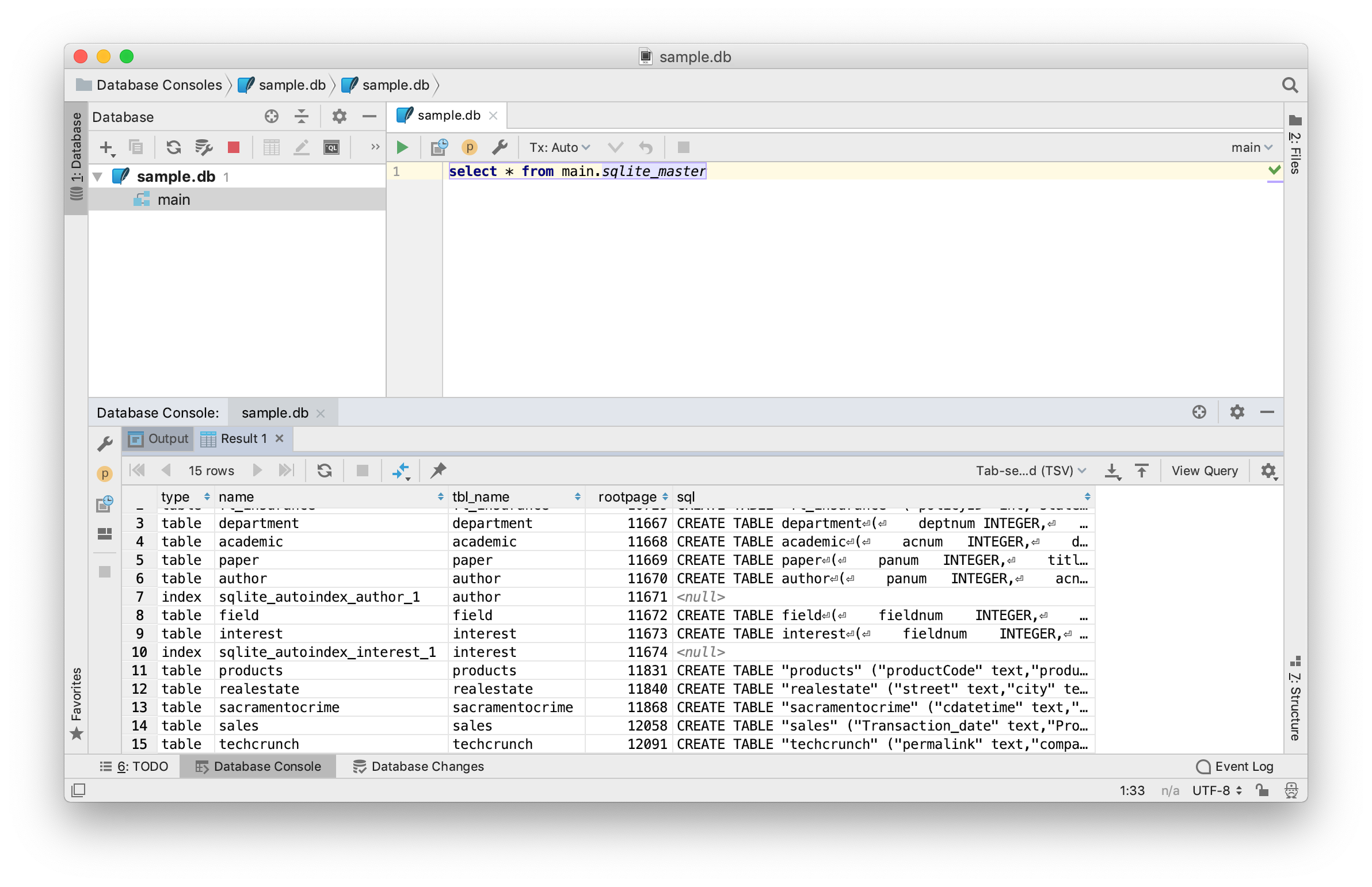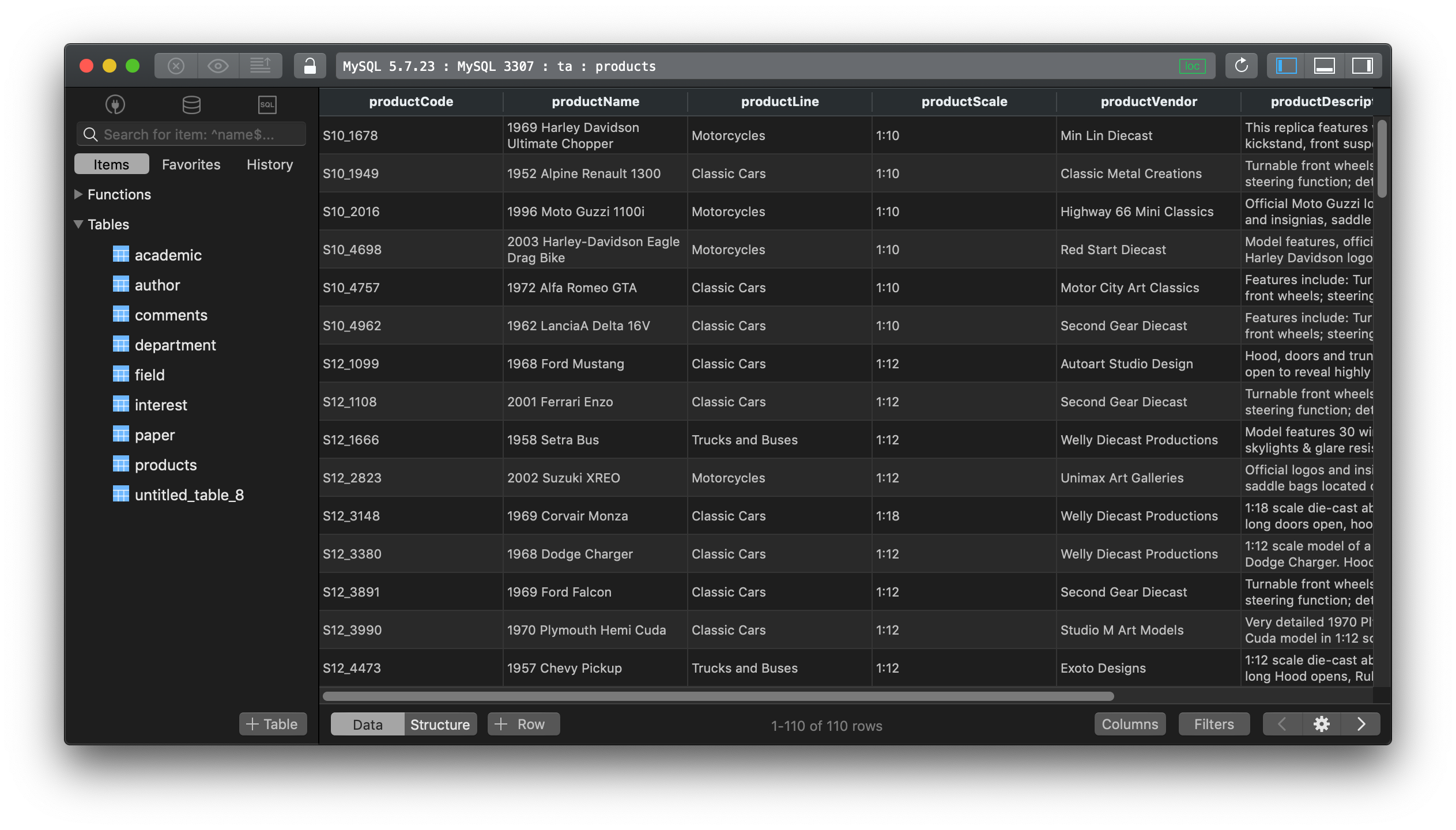Sequel Pro vs DataGrip vs TablePlus - a quick review
Having a good GUI client would save us a lot of time working with databases. In this post, we are going to have a quick review of three database tools: Sequel Pro, DataGrip, and TablePlus; along with pros and cons of each tool to see which is the one that matches your needs for database management tasks.
1. Sequel Pro
Sequel Pro had been long known for being one of the best GUI tools for MySQL until recently when it has compatibility issues with MySQL 8 and Mojave.
-
Supported Platforms: Sequel Pro is available on macOS only.
-
Supported Drivers: Sequel Pro only supports MySQL. It works well with MySQL up to 5.7. Since the recent MySQL 8.0 came out, it’s reported that Sequel Pro can’t connect to MySQL 8.0, it’s not working properly or just crashing.
-
Pricing: Sequel Pro is free and open source. It also accepts donation.

Pros:
- Very clean and simple interface. It’s easy for newbies to get started.
- It runs fast.
- Easy to import/export databases.
- Connections over SSH
- Full user management, credentials, and roles
- Filtering/Sorting data based on single constraint including equal to/in/like/between etc.
- Sanity check or data integrity check.
- It’s free
Cons:
- Crashes very often and randomly. This is a big problem in the current (2016 to present) version of Sequel Pro.
- Available for Mac only. The development is stopped now.
2. DataGrip
DataGrip provides robust tools that streamline SQL code writing and make the entire process more efficient.
-
Supported Platforms: DataGrip is cross-platform. It works well on macOS, Linux, and Windows.
-
Supported Drivers: DataGrip supports a whole lot of databases: Postgres, MySQL, Oracle, SQL Server, Azure, Redshift, SQLite, DB2, H2, Sybase, Exasol, Derby, MariaDB, HyperSQL, Clickhouse.
-
Pricing: DataGrip has a pay-to-play model. You can download and use the free trial for 30 days, then you need to pay for a subscription service. It costs $8.9/mo for an individual and $19.9/mo/user for business.

Pros:
- It supports multiple drivers.
- It has smart context-sensitive and schema-aware code completion.
- A visual table editor lets you add, remove, edit, and clone data rows.
- It has version control support.
- Refactoring support.
Cons:
- It’s not user-friendly. It takes time to learn how to use it.
- It doesn’t run fast, compared to similar tools. It will be very sluggish when working with high-volume databases.
- It leaves a high memory footprint. It can use up to several GB’s of memory.
- The cost is relatively high.
3. TablePlus
With a native build and a lightweight size, TablePlus is a very handy tool for managing multiple databases.
-
Supported platforms: TablePlus is built native for each platform. It started out with a native version for Mac, then another version for Windows, and a version for Linux was introduced recently as an alpha release. It also has an iOS version.
-
Supported Drivers: TablePlus supports a handful of relational databases: MySQL, PostgreSQL, SQLite, Microsoft SQL Server, Amazon Redshift, MariaDB, CockroachDB, Vertica, Oracle; and two popular NoSQL databases: Cassandra and Redis.
-
Pricing: TablePlus has a free version with full set of features which you can download and use forever, but there are some usage limitations. If you use it heavily, the license costs $59 to remove all those limitations.

Pros:
- Native build for each platform so it’s fast, lightweight, and stable.
- Clean and simple interface.
- Multiple drivers support
- Multiple conditions data filter
- Queries history and keyword binding favorite.
- Streaming results and async loading to show queries results faster and doesn’t block the UI.
- Very quick inline editing for table data and structure, you also can edit query results directly.
- Smart query editor with highlight syntax, instant autocomplete, SQL reformat.
- A plugin system to extend the app.
- Quick support. TablePlus releases new updates regularly and responds to users’ requests almost immediately.
Cons:
It currently lacks of some advanced features such as ER Diagram, database compare tool to Diff and Sync, etc.
4. Conclusion
Go with DataGrip if you:
- Need a tool with full features
- Don’t mind the huge size and memory footprint of the app
- Comfortable with the cost attached.
Go with Sequel Pro if you:
- Um. It’s dead. Just move on.
Go with TablePlus if you:
- Are a fan of native experience
- Work with multiple databases
- Want a modern design with better usability
- Want quick support & development cycle.